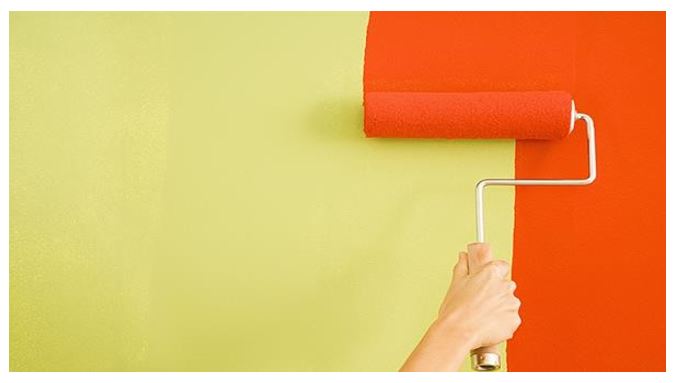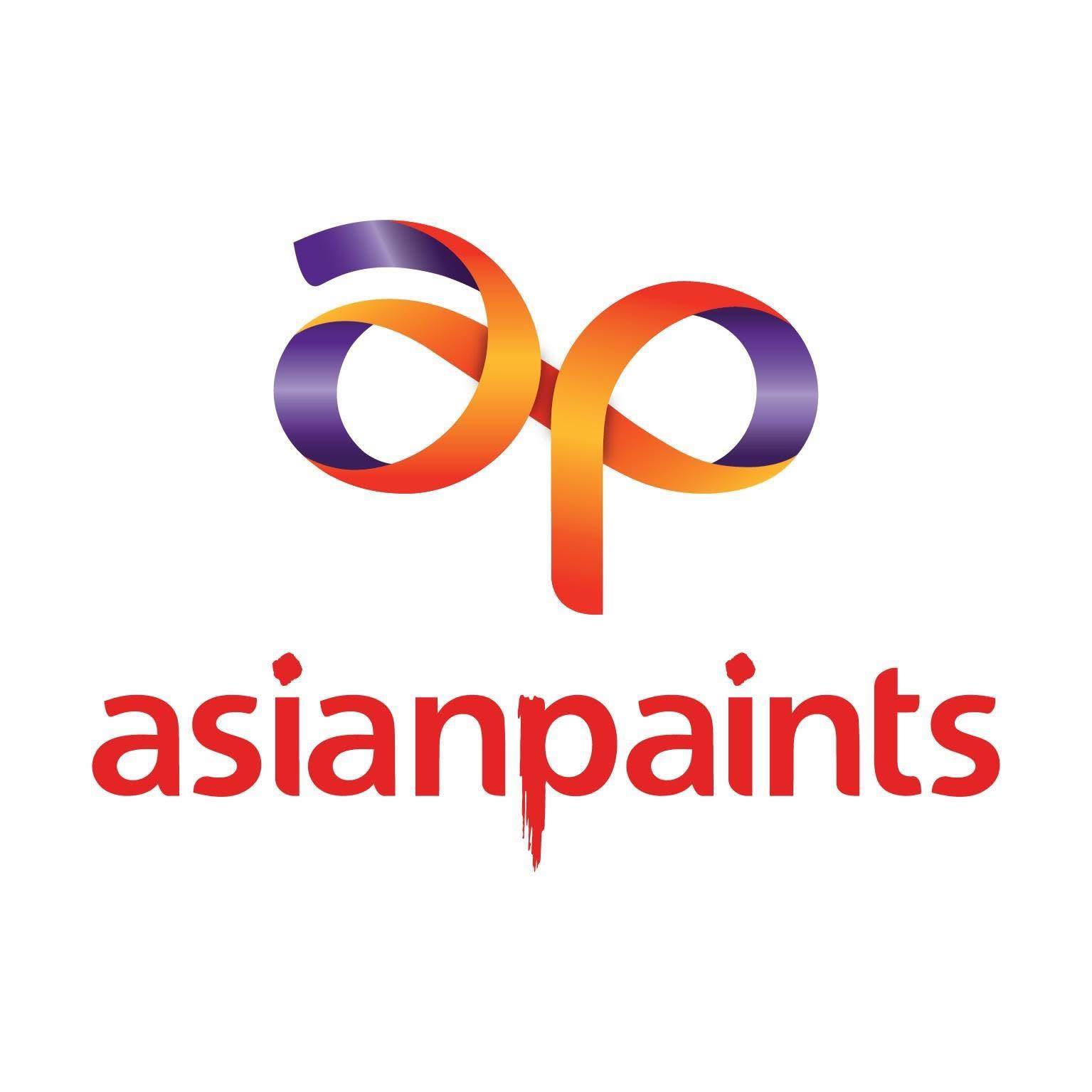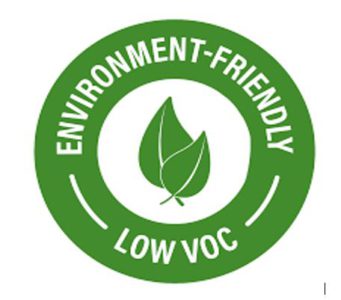Dhaka is a magical city where people start their day with dreams and relentlessly struggle for survival and a livelihood to fulfil them. The megacity, one of the most densely populated in the world, has four to five times more people than its capacity. Have we ever considered whether this city can bear the pressure of such a large population and provide civic amenities?
As a result, this vibrant city is becoming uninhabitable and turning into a concrete jungle, with not a single trace of greenery. For the past few years, we have seen that Dhaka’s air is extremely polluted, and it is the most polluted city in the world due to air pollution. As the air pollution in Dhaka has increased severely, we are constantly living in danger to our health, and our environment is struggling.

While searching for the cause of the excessive pollution in Dhaka’s air, we find that the major pollutants responsible for air pollution are CO₂ and other greenhouse gases. Emissions from power plants, construction debris, industrial and transport-related air pollution have all contributed to the toxic air we now breathe every day.
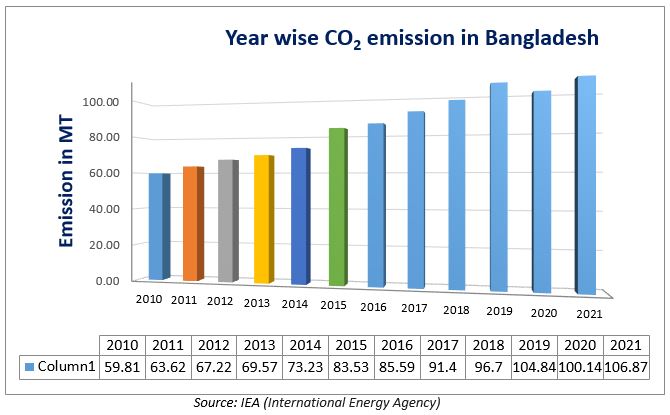
In Bangladesh, CO₂ gas emissions have seen a steady rise from 59.81 million tonnes (MT CO₂) in 2010 to 106.87 MT CO₂ in 2021, increasing by an average of 5.5% MT CO₂ each year. If this trend continues, emissions are projected to reach over 155.45 MT CO₂ by 2028. If we cannot control the amount of carbon emissions now, our environment will face serious disasters, which is worrying for us and future generation.

On the other hand, people spend 80 to 90% of their time indoors, so it’s important that the room is healthy and pollutant-free. Indoor air quality is very important for everyone, especially the elderly and children, where the amount of carbon dioxide remains at a tolerable level and other greenhouse gases.
Berger Paints (BD) Ltd. has taken initiatives by launching Eco Coat, Bangladesh’s first anti-pollution paint, a revolutionary solution to combat air pollution. Air Purifying Hybrid (APH) technology, developed by Berger R&D researchers, is used here to neutralise harmful airborne pollutants in the air. This paint is designed to absorb greenhouse gases carbon dioxide (CO₂), methane (CH₄), and toxic gases (CO, H₂S, SOx, NOx), as well as formaldehyde (HCHO) present in the air. Opting for a Berger Eco Coat not only guarantees a reliable and long-lasting result but also reflects your dedication towards safeguarding the environment from global warming.
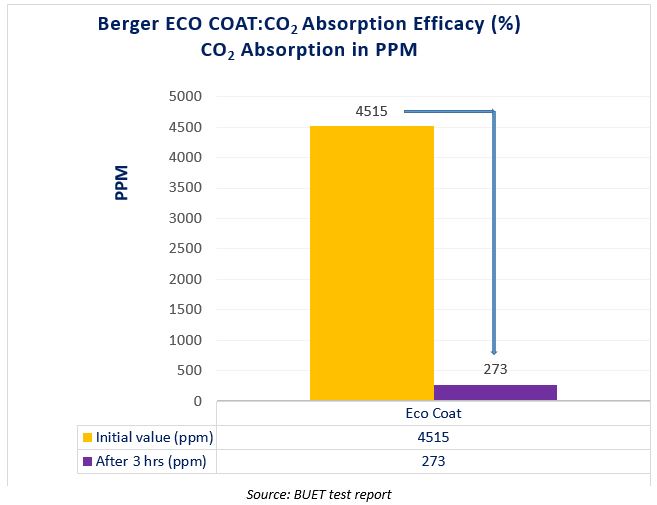
The above graphical image shows that the CO₂ content in a demo room before painting was 4515 ppm, and three hours after applying Berger Eco Coat, the CO₂ content has decreased to 273 ppm. The efficacy of CO₂ emission after three hours was 94%. Berger Eco Coat’s ability to reduce indoor air pollution up to 90% is a significant breakthrough for our environment. This paint is suitable for application on both interior and exterior surfaces like homes, schools, hospitals, and there are many people in confined spaces where fresh air is limited. This product is tested and validated by SGS Bangladesh, Rudolf (Germany) and Bangladesh University of Engineering (BUET).
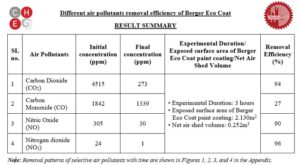 Berger Paint has always been environmentally conscious, and that commitment has led to all of its products being lead and other heavy metal free, as well as low VOC and APEO free. In this era of carbon footprint, Eco Coat will continue its journey as another exemplary product where customers will contribute to building a beautiful planet and sustainable Bangladesh for future generations by fulfilling their own home paint needs. Md. Mohsin Habib Chowdhury, the chief operating officer of Berger Paints Bangladesh Limited and the president of Bangladesh Paint Manufacturer’s Association (BPMA), rightly said, ‘We recognise industry challenges and actively invest in climate-specific solutions.’ The focus on environmental sustainability is a growing trend worldwide, leading to rising demand for eco-friendly paints.
Berger Paint has always been environmentally conscious, and that commitment has led to all of its products being lead and other heavy metal free, as well as low VOC and APEO free. In this era of carbon footprint, Eco Coat will continue its journey as another exemplary product where customers will contribute to building a beautiful planet and sustainable Bangladesh for future generations by fulfilling their own home paint needs. Md. Mohsin Habib Chowdhury, the chief operating officer of Berger Paints Bangladesh Limited and the president of Bangladesh Paint Manufacturer’s Association (BPMA), rightly said, ‘We recognise industry challenges and actively invest in climate-specific solutions.’ The focus on environmental sustainability is a growing trend worldwide, leading to rising demand for eco-friendly paints.

Sk Emadul Bari is a dedicated researcher at Berger Paints Bangladesh Ltd, where he passionately contributes to the field of the paint and coating industry. He holds a master’s degree in applied chemistry and chemical engineering from the University of Rajshahi. An accomplished paint & coating research & development professional with over 18 years of proven experience in water-based coating innovations, paint formulation, and raw material selection with a strong focus on eco-friendly solutions and VOC reduction strategies.
His expertise extends to developing sustainable practices that enhance product performance and minimise environmental impact. With a track record of successful projects, he is committed to advancing the industry towards greener alternatives and setting new standards for quality and sustainability.
Views expressed in this article are the author’s own.

